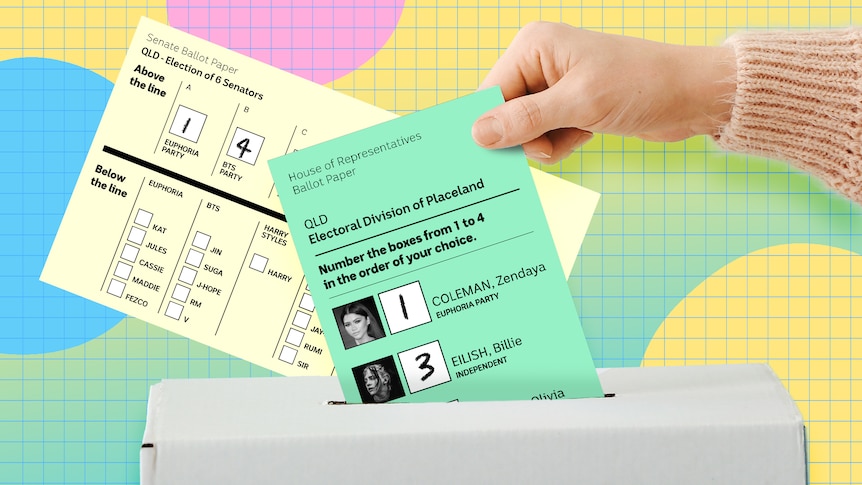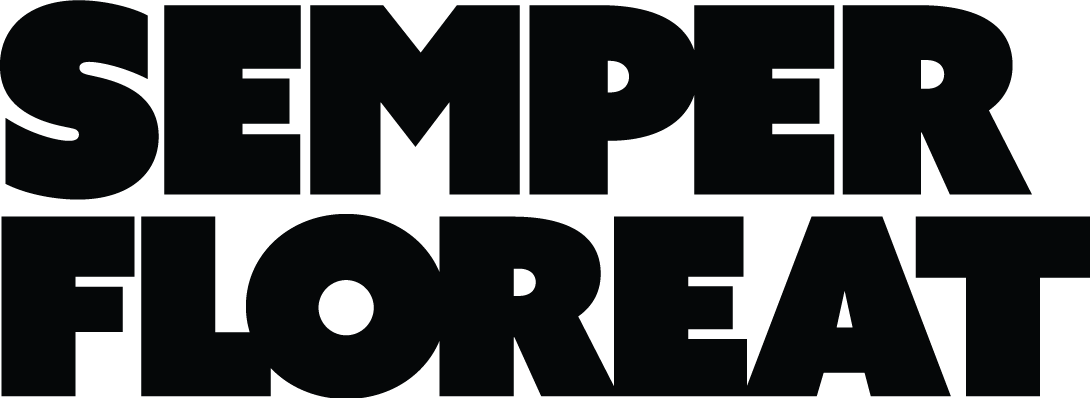
This coming election, many UQ students will be provided the opportunity to have their democratic say on who they want to represent them in their local federal electorate. Even if you haven’t voted before, this federal election will be an ultimatum asking whether we should keep the current Federal Labor Government led by Anthony Albanese in Government or whether the people of Australia believe that there should be a change of government? So, let’s unpack a few things about the election including what some of the political parties are promising and their track records on issues impacting university students and a bit more information on who is running and how to vote.
Australian Labor Party
The Australian Labor Party is currently the party in Government led by Anthony Albanese and are hoping to be re-elected this election. In the term that they’ve been in Government they launched the Australian University Accords to which provided a 12-month review of Australia’s higher education system and devised recommendations and performance targets that were focused on improving the quality, accessibility, affordability and sustainability of higher education.
The University Accords provided a report that had over 400 pages and 47 recommendations for the Albanese Labor Government to consider – 29 of these recommendations were responded to. Out of these recommendations some of the key reforms people might recognise that have been introduced or about to be introduced in higher education include paid placements for social work, teaching, nursing and midwifery students, the establishment of the National Student Ombudsman and HECS indexation reform which has resulted in many current and former students who have a HECS debt receiving credit to their outstanding debt so they can potentially pay it off more quickly.
Despite what may seem like an agenda for higher education reform in their recent term, the Australian Labor Party only really has two election promises for university students this election. They are promising that if re-elected, they will cut student debt by 20% and will also raise the repayment threshold and lower repayment rates for HECs debts. These promises are framed to offer cost of living relief and whilst cost of living relief sounds nice, it doesn’t really offer much of a vision for higher education. But nonetheless, let us compare this with the LNP’s policies and track record.
LNP (Coalition)
If you didn’t know, the LNP (Liberal/National Coalition in Federal Parliament) were in Government from 2013 – 2022. During their time in Government, they didn’t necessarily have the best track record surrounding higher education policy.
Some of the controversial policy they proposed and was part of their agenda for higher education reform included the attempt to deregulate university fees which would have substantially risen university fees for undergraduate domestic students to the extent where university fees would have been like that in the US. Despite this policy being defeated twice within the Senate, this didn’t stop the LNP from proposing the Jobs Ready Graduates Package – which was essentially a lite version of the university fee deregulation policy. This policy unfortunately did pass the Federal Parliament and ensured students studying communications, humanities, other society and culture and human movement having a significant 113% rise in their student fees and student contributions. Not to mention, this resulted in reducing the amount of funding available to higher education providers to deliver subjects within the areas of science, engineering and mathematics. This policy was specifically mentioned in the final University Accords Report where it called for recommendations to urgently remediate this policy as it continued to place financial burden on students.
Now moving forward and being in Opposition for the last 3 years, the one policy that the LNP currently has relating to higher education this election is to reduce the number of international students studying at metropolitan universities. They haven’t revealed any other policies surrounding higher education, so if they do get elected it’ll be interesting to see what direction they take in terms of higher education with the lack of information and vision available… hopefully not one full of cuts to university funding or increasing university fees like previous policies when they were in Government.
Australian Greens
When it comes to higher education policy – the Greens seem to have it in the bag with their track record in supporting policy that supports both students and the higher education sector. Some of the policies that they have include wiping all student debt; providing free higher education; boosting funding for universities & TAFE; securing jobs for University Staff and raising PhD stipends to name a few of the issues they support and campaign for on higher education policy. Over the years, the Greens have not held enough seats in the House of Representatives nor the Senate to be the party in Government but have been part of the crossbench where they have been in the position to negotiate with the Government or Opposition on policy.
Final Remarks
We are privileged to live in a Liberal Democracy that allows us to have a fair democratic say on who we would like to represent us in our Parliaments. We all have different issues that matter to us and different perspectives. This is just a glimpse at some of the political parties’ promises and track record regarding the higher education sector. The main point is how important it is for you to vote and have your say. Even though there are many people disillusioned with the current political system, I recommend researching, having conversations with your friends and making an informed decision on who you want representing you and voting. Every vote does count and even if you aren’t happy with the current Government or don’t like the Opposition, by voting you are having your say. Also, if you can’t vote on Election Day, be sure to vote at Pre-poll. You can be able to find your closest polling booths through the following link: https://www.aec.gov.au/Voting/ways_to_vote/
Who are our candidates?
There are many candidates running for this election – see below for a list of who may be running in Brisbane based seats. Please note that only Brisbane based electorates have been mentioned due to the University of Queensland St Lucia campus being based in Brisbane. If you are seeking more information about candidates, be sure to check out their political party’s website or their social media profile.
Ryan:
- Elizabeth Watson-Brown (Greens MP)
- Maggie Forrest (LNP)
- Rebecca Hack (ALP)
- Donna Gallehawk (Family First)
- Robbie Elsom (Pauline Hanson’s One Nation)
- Nicole De Lapp (Gerard Rennick People First)
- Lachlan McCall (Trumpet of Patriots)
- Gina Masterton (Fusion)
Brisbane:
- Stephen Bates (Greens MP)
- Trevor Evans (LNP)
- Madonna Jarrett (ALP)
- Kirsten Sands (Family First)
- Brian Thiele (Trumpet of Patriots)
- Joseph Wheeler (Gerard Rennick People First)
- Rachel Blackwood (Fusion)
- Cheryl Wood (Pauline Hanson’s One Nation)
Griffith:
- Max Chandler-Mather (Greens MP)
- Renee Coffey (ALP)
- Anthony Bishop (LNP)
- Andrea Campbell (Family First)
- Aaron Hayes (Trumpet of Patriots)
- Dion Hunt (Gerard Rennick People First)
- Lindsay Bell (Pauline Hanson’s One Nation)
Lilley:
- Anika Wells (ALP)
- Kimberley Washington (LNP)
- Melissa Stevens (Greens)
- Alan Denaro (Family First)
- Joshua Morrison (Trumpet of Patriots)
- Michelle McKay (Pauline Hanson’s One Nation)
Moreton:
- Julie-Ann Campbell (ALP)
- Henry Swindon (LNP)
- Remah Naji (Greens)
- Melinda Keller (Family First)
- Max Hooper (Citizens Party)
- Christian Julias (Trumpet of Patriots)
- Natarsha Billing (Gerard Rennick People First)
- Grant Spork (Pauline Hanson’s One Nation)
Oxley:
- Milton Dick (ALP MP)
- Kevin Burns (LNP)
- Brandan Holt (Greens)
- William Tento (Family First)
- Mark McGuire (Trumpet of Patriots)
- Darren Baker (Pauline Hanson’s One Nation)
- Mike Head (Independent)
For the Senate, check out the ABC news website which provides a full list of the candidates running for the Senate including information about who is currently in the Senate and running again as well as previous Senate results, if that is of interest! You can find the information here: https://www.abc.net.au/news/elections/federal/2025/guide/senate-qld
How Voting Works at the Election:
When you go and vote, you will receive two ballot papers – one for the House of Representatives and the other for the Senate.
The House of Representatives ballot paper will be smaller than the Senate ballot paper and will be your decision as to who you would like to represent you as your local MP in the Federal Parliament. It is important to note that for your vote to be cast as a valid and formal vote, you need to preference all the candidates on this ballot paper. This means that you will have to preference ‘1’ for your top candidate and number every other square afterwards with your preference as to who you want to be your representative in the Federal Parliament. If you are a bit confused about what this means, what I would recommend is grabbing a How to Vote Card from one of the campaigners outside a polling booth just to be able to see how the voting works.
For the Senate ballot paper – this is a larger paper and will have a total of 56 candidates to elect a total of 6 senators for QLD. There are two ways in which you can vote on this paper. The first way is called ‘Above the Line’ voting where on the ballot paper you will see specifically on the paper a black line and above it a bunch of boxes listing political parties. For above the line voting, most political parties will have how to vote flyers which will indicate how a valid vote is cast which is to number at least 6 boxes with your preference. What above the line voting allows is for you to put your confidence in the ticket that the party has proposed for the election.
Finally, below the line voting is the other option when it comes to voting for the Senate. This involves preferencing up to 12 individual candidates, which is you indicating your own personal preference on the way you want your vote to flow. The how to votes provided by campaigners outside of polling booths won’t really help with this, but this is an option for you to cast your vote in case you may like only certain candidates for a particular party, etc.
Written by Jordy Duffey
Views: 67
